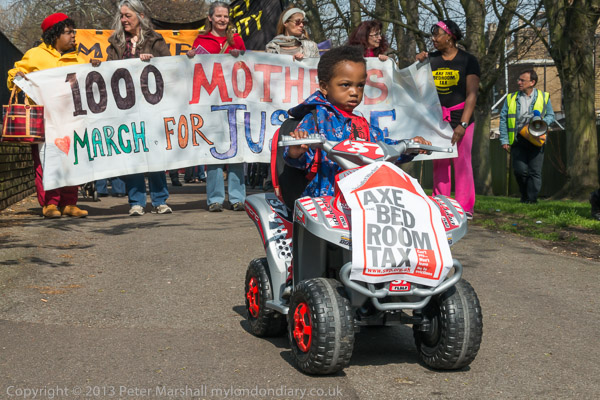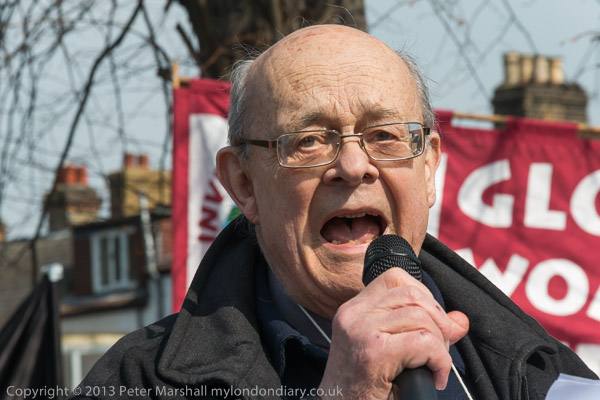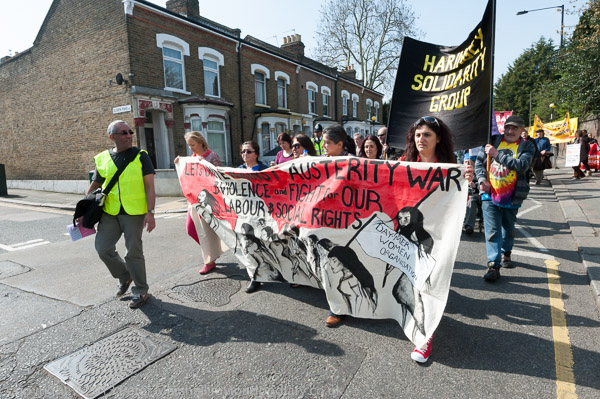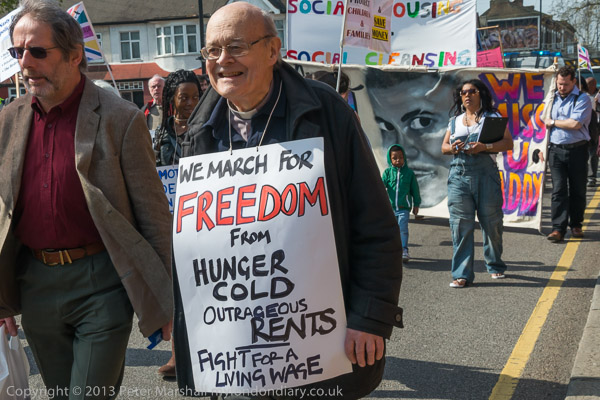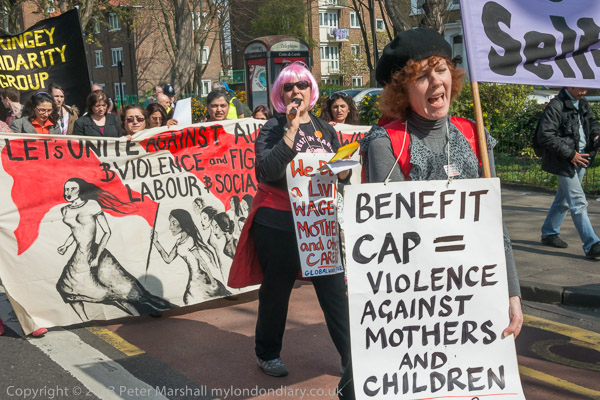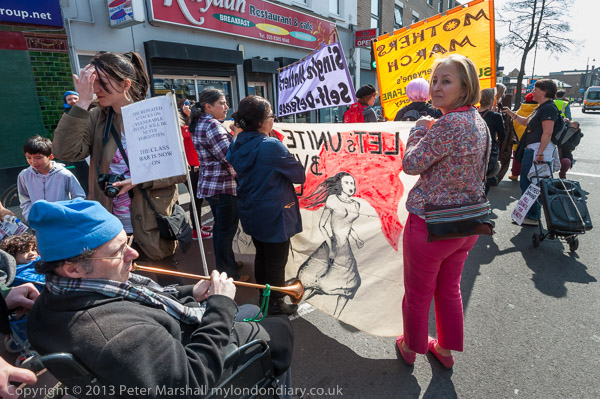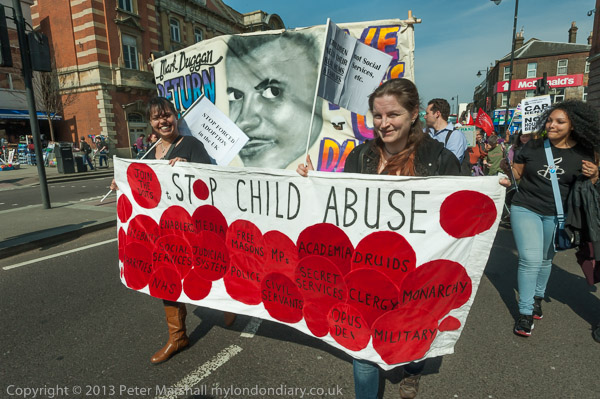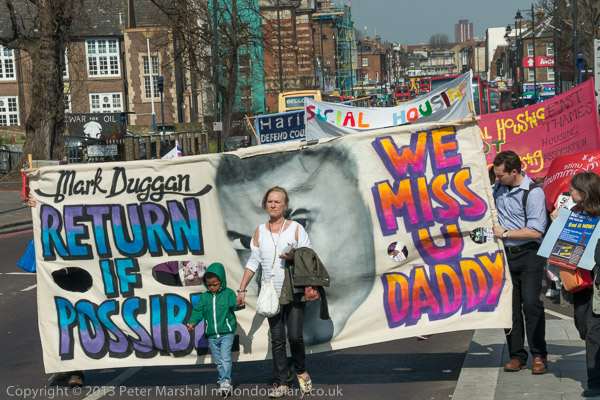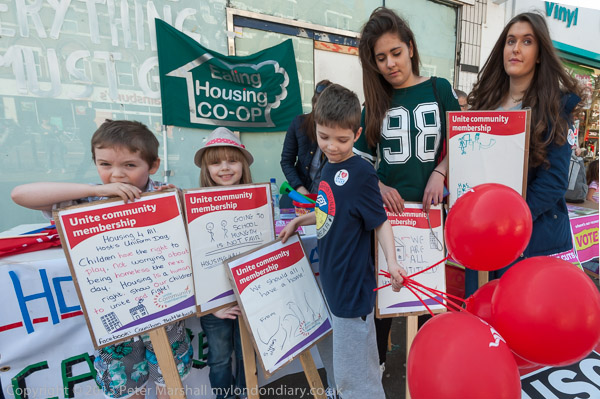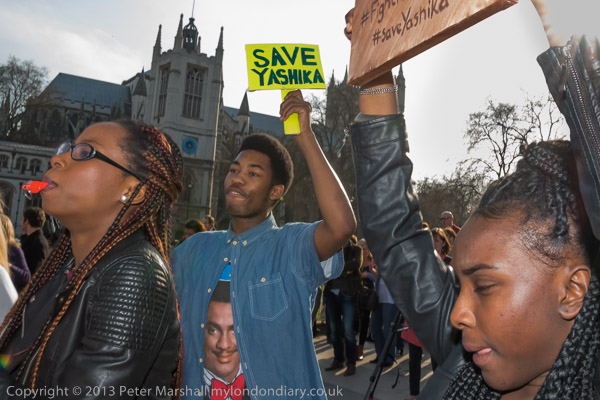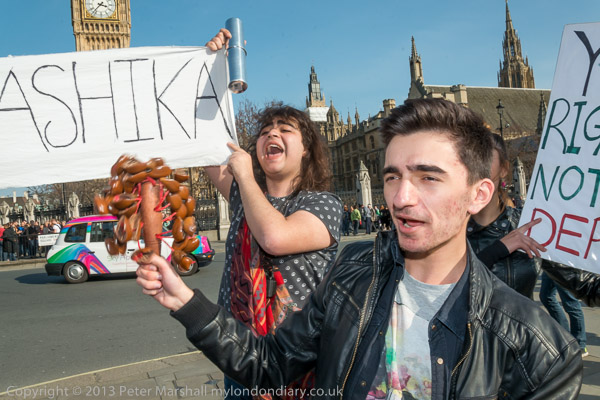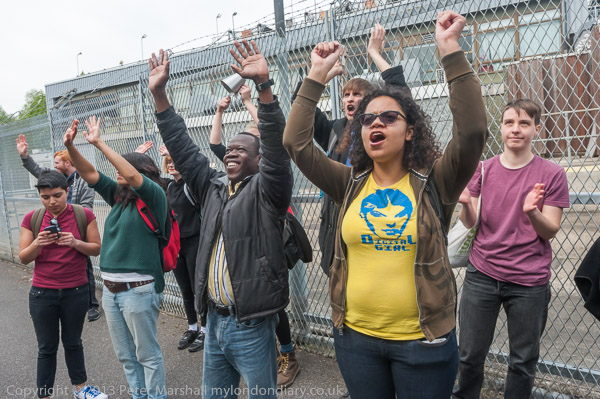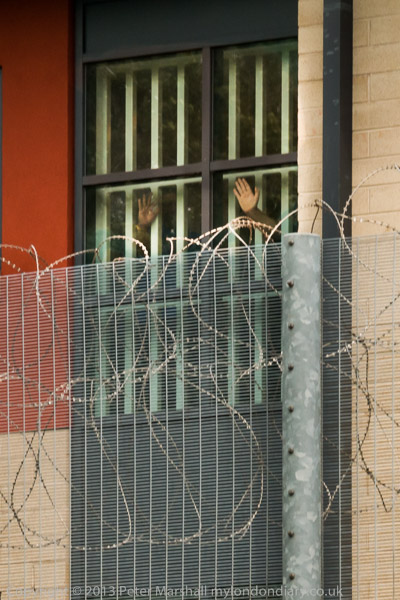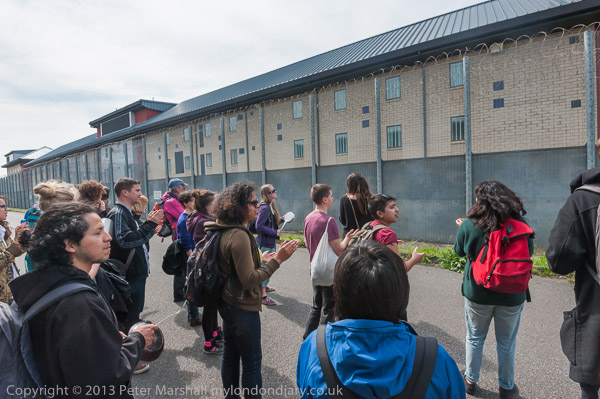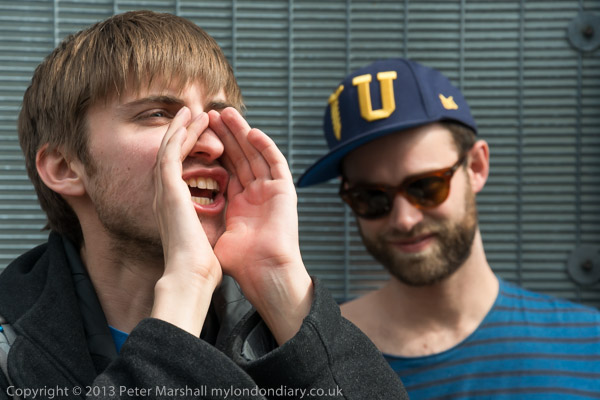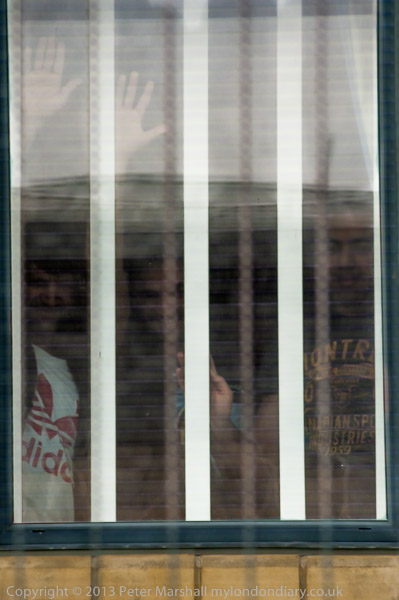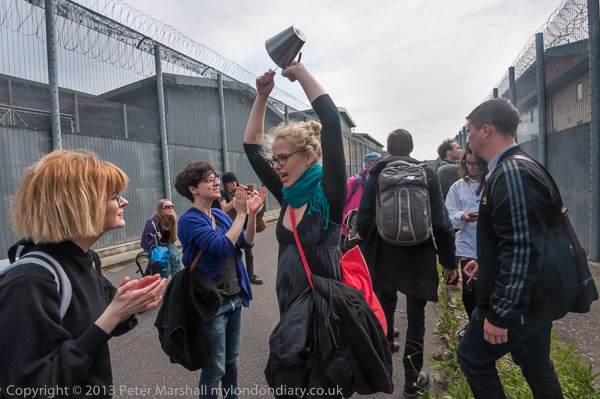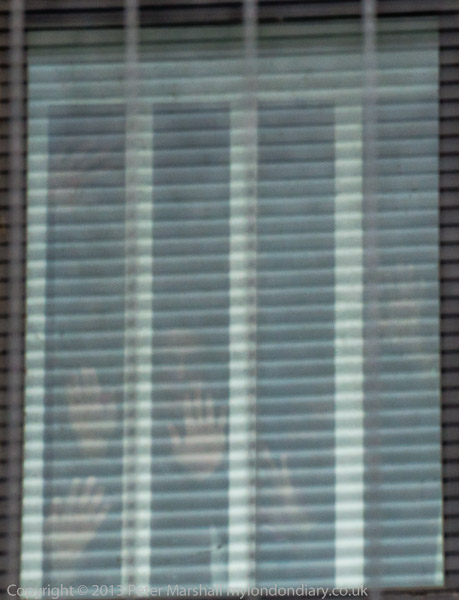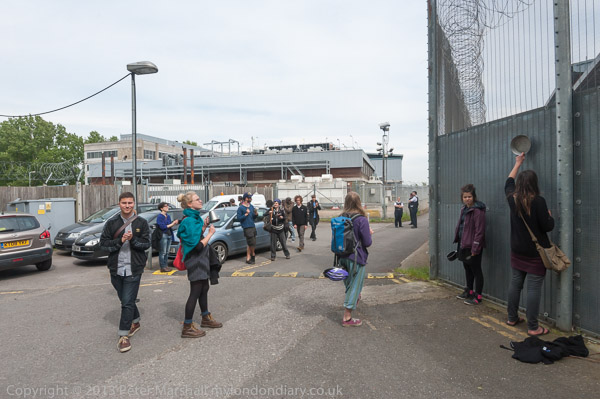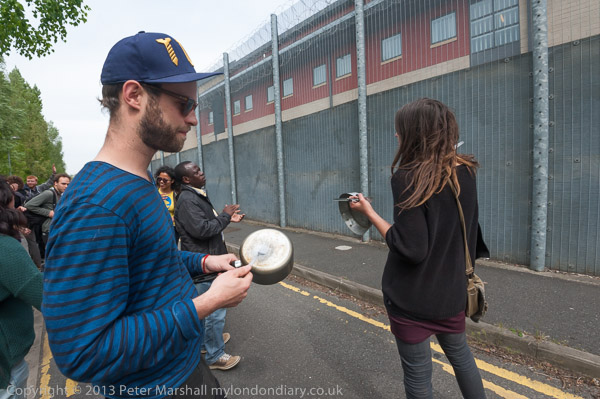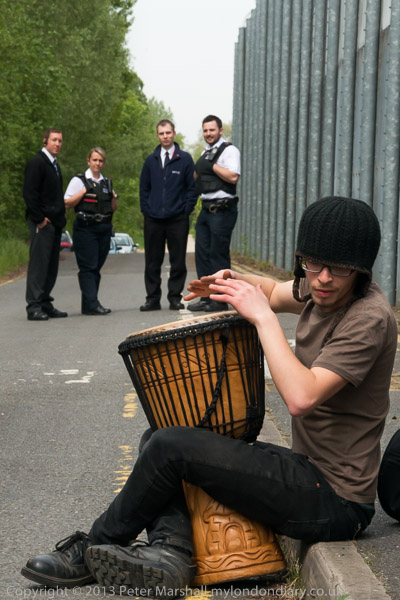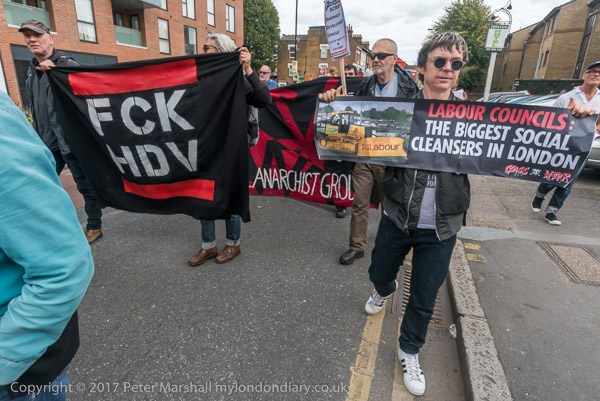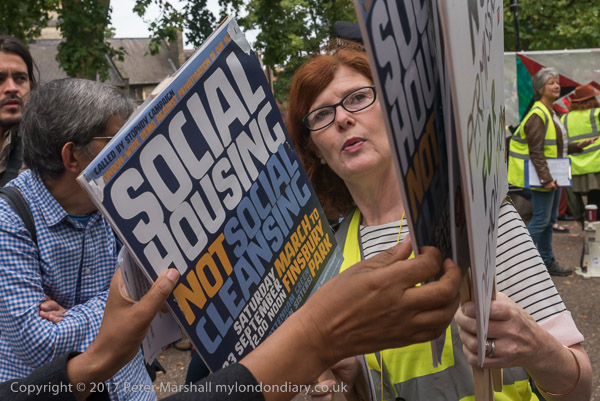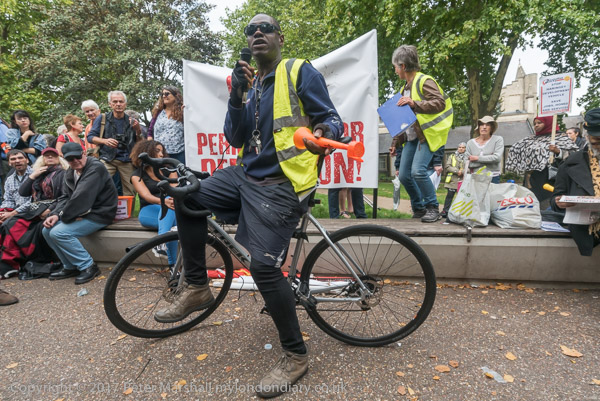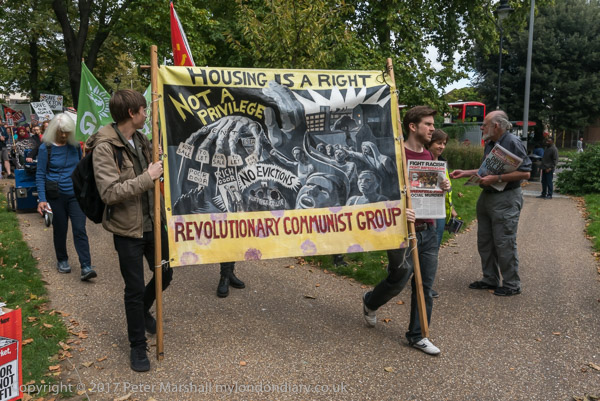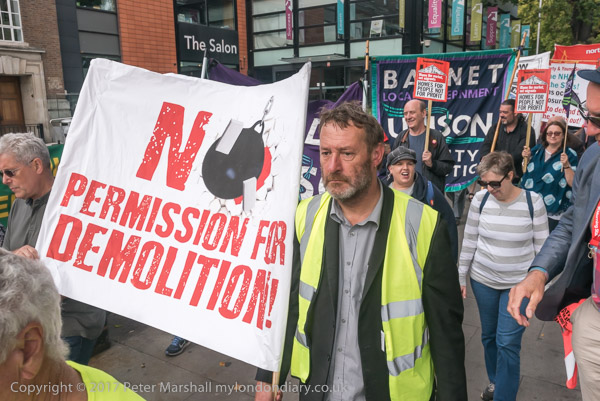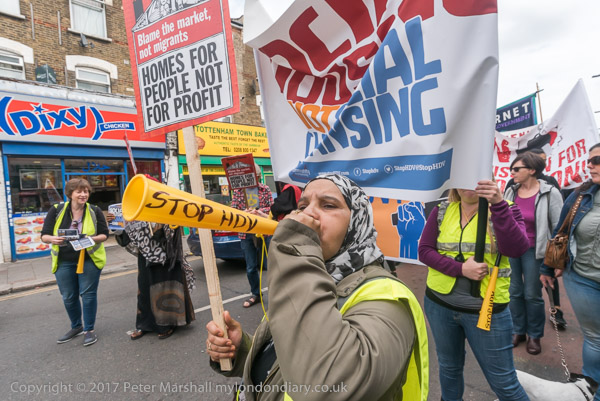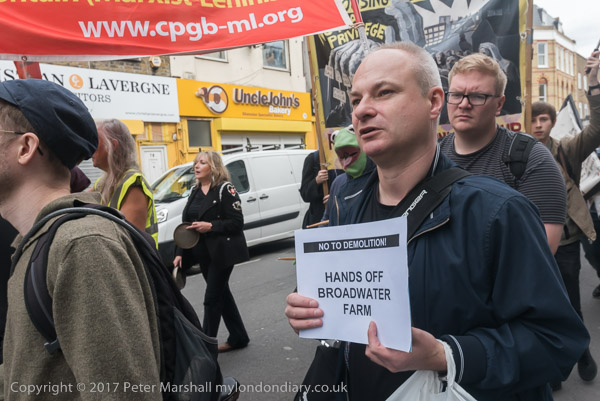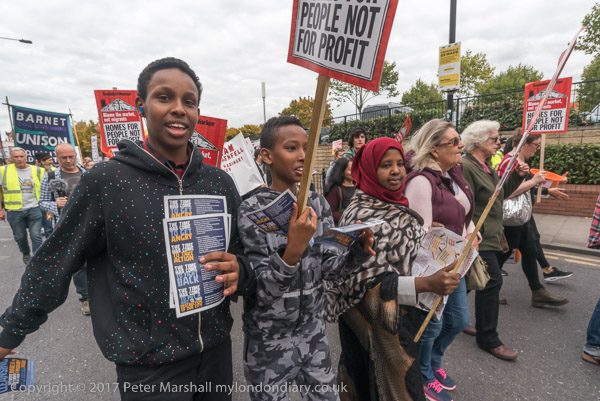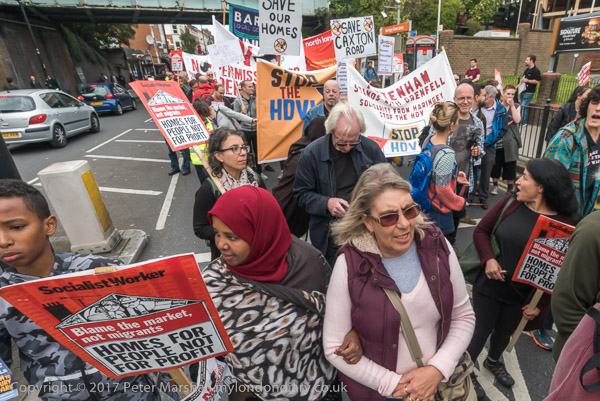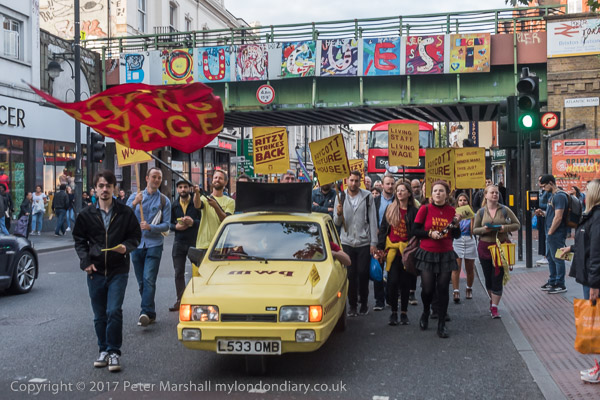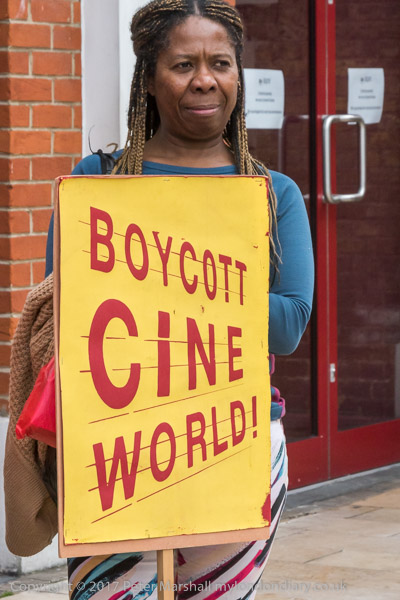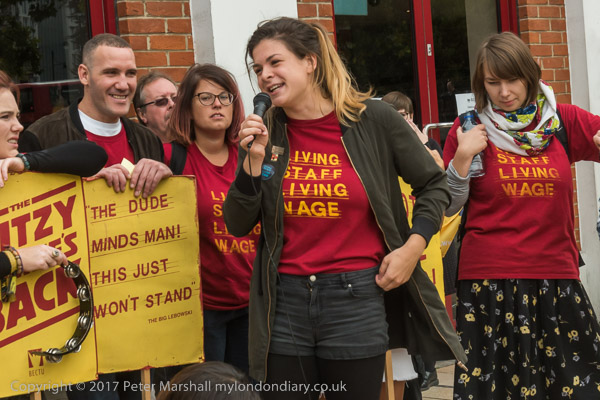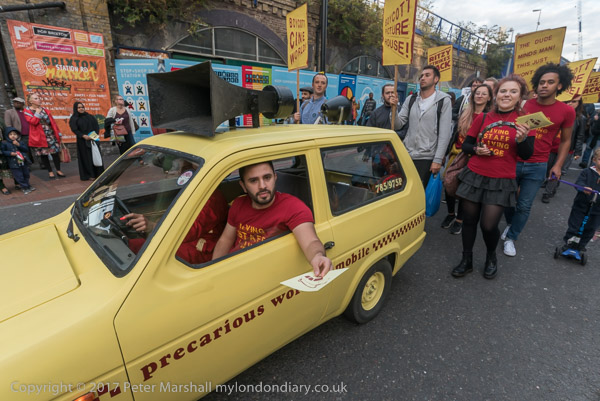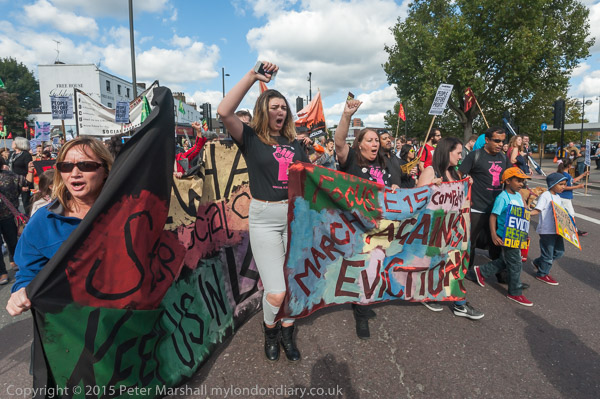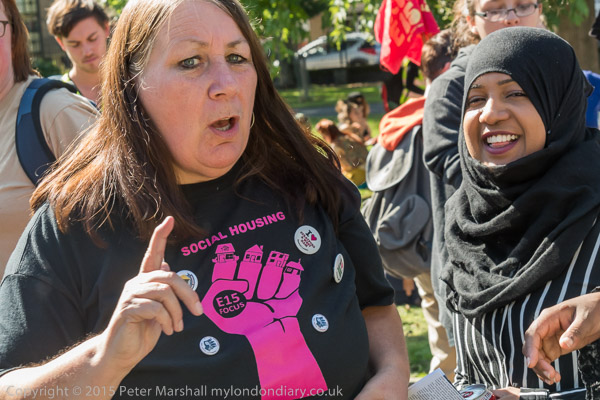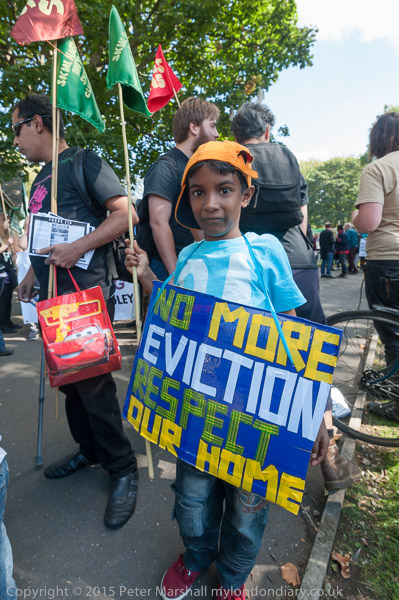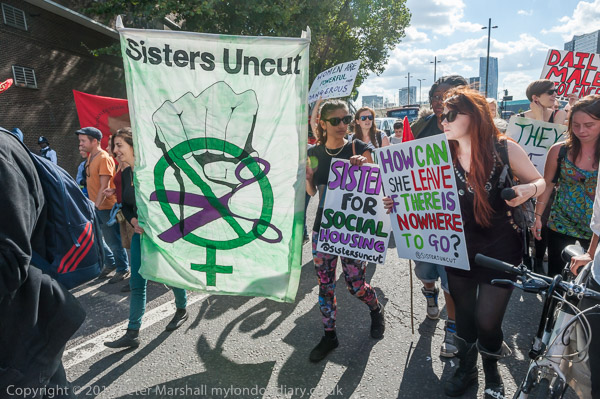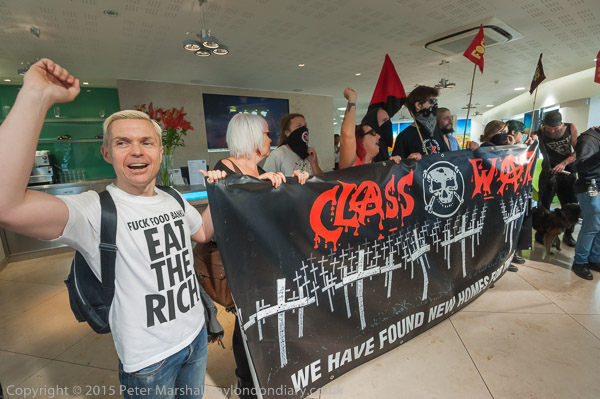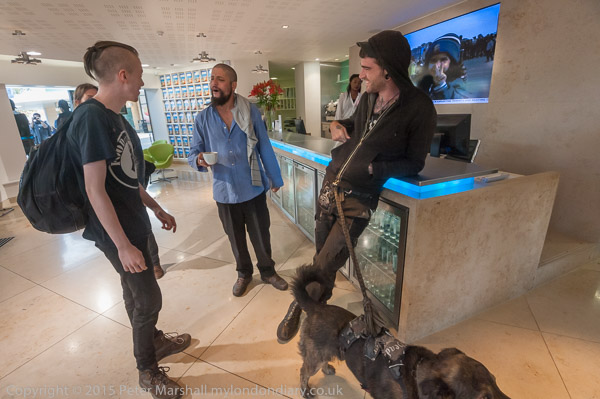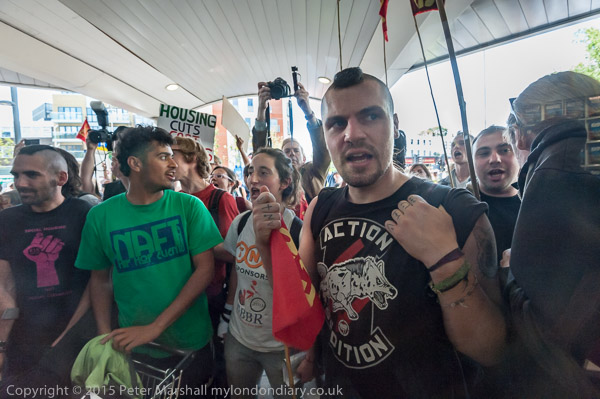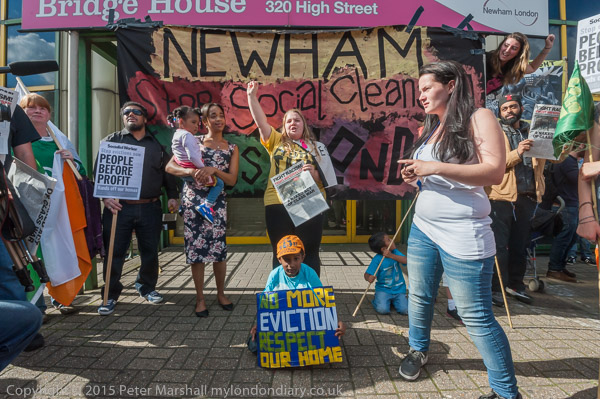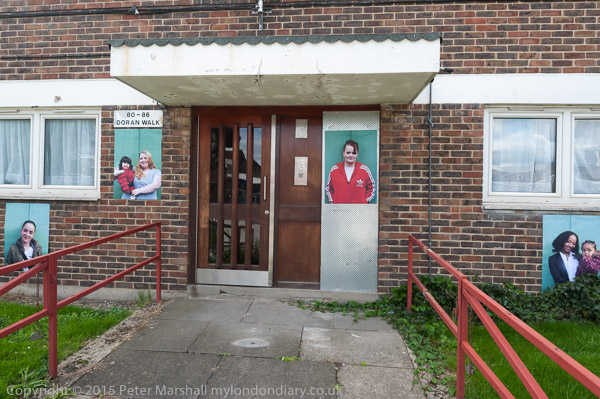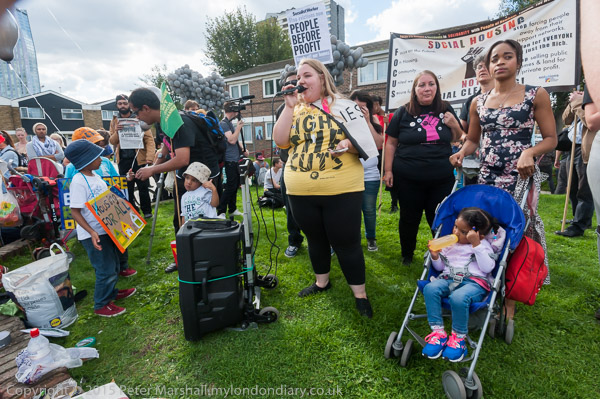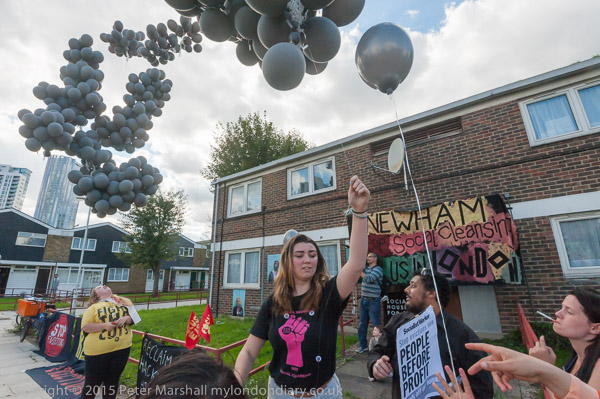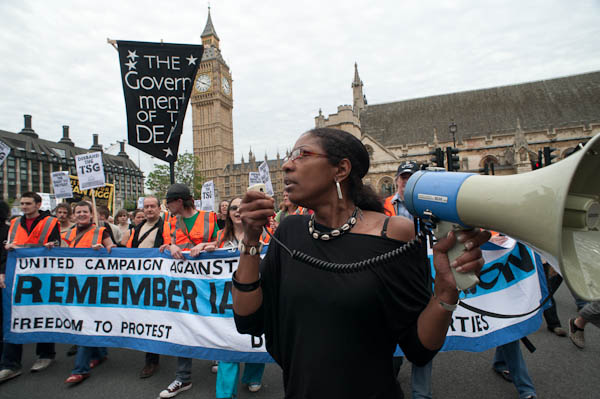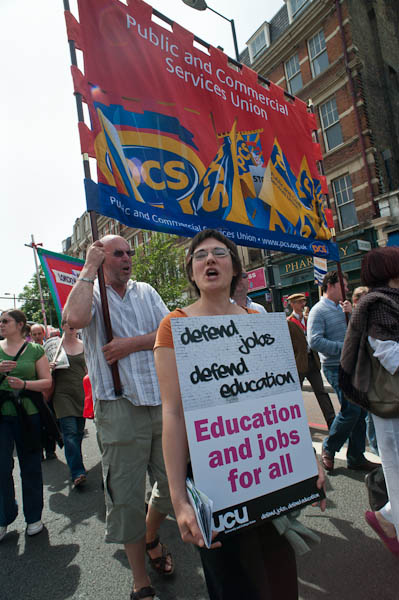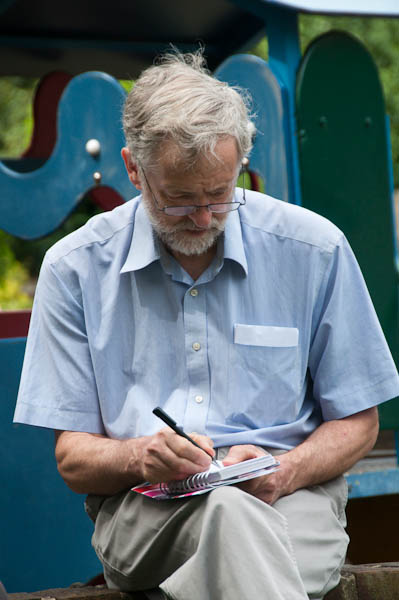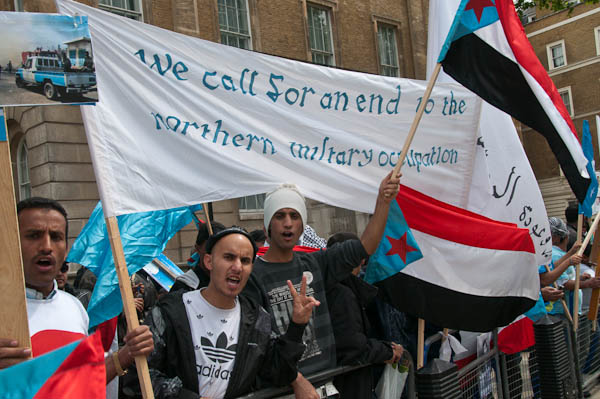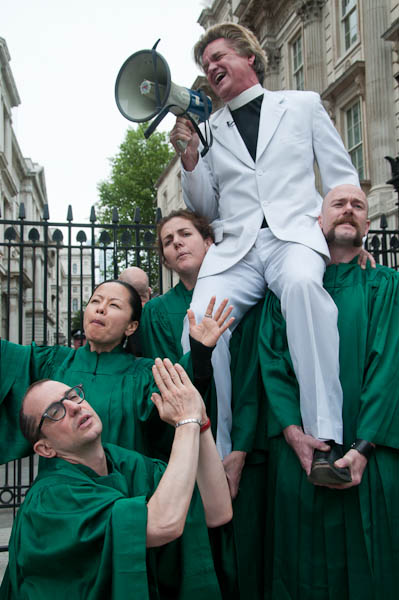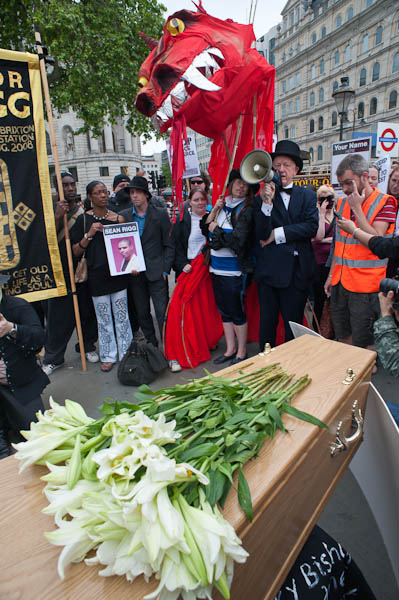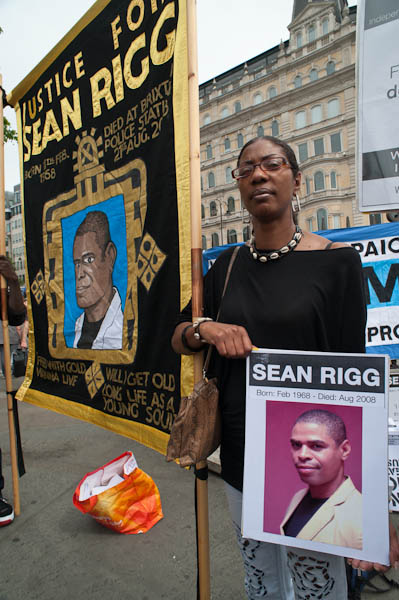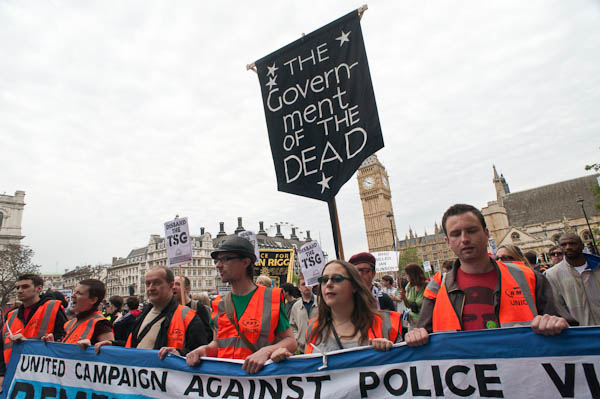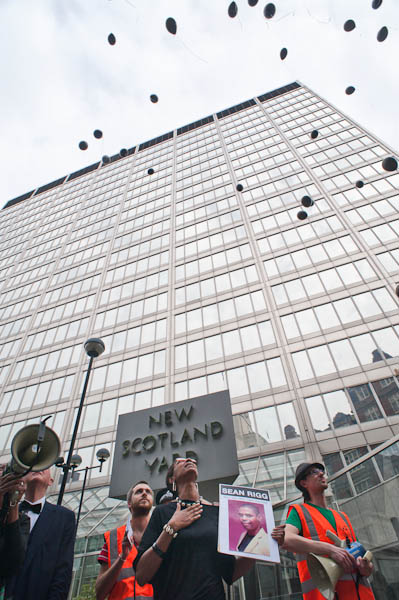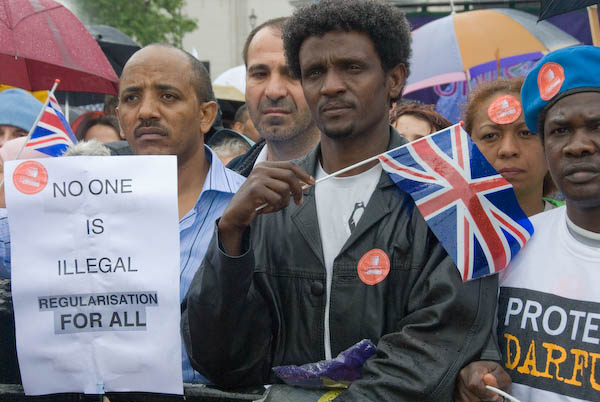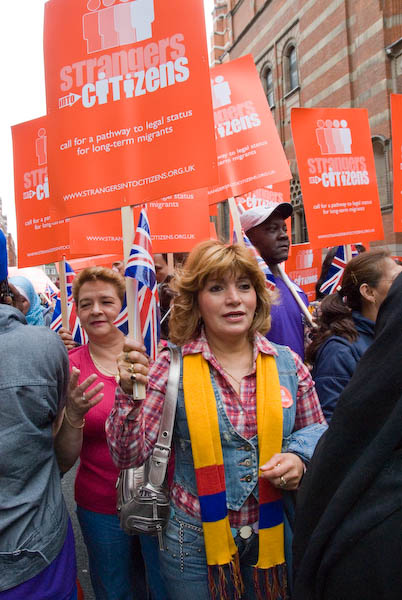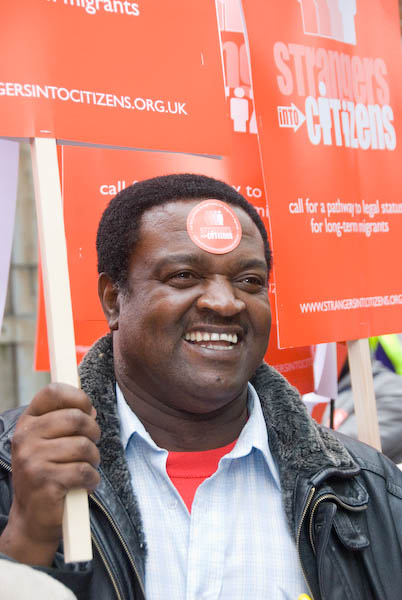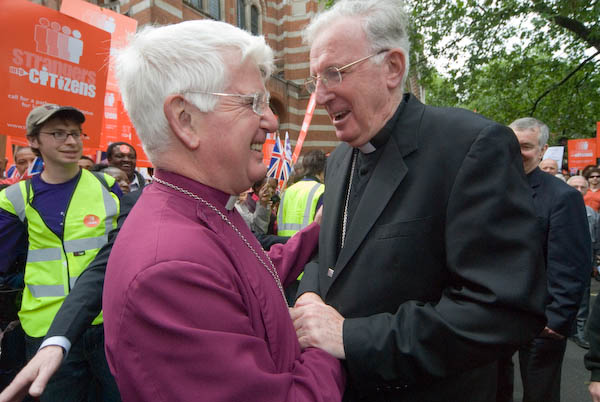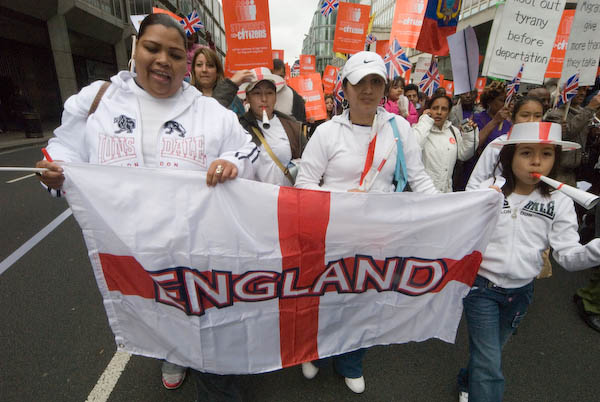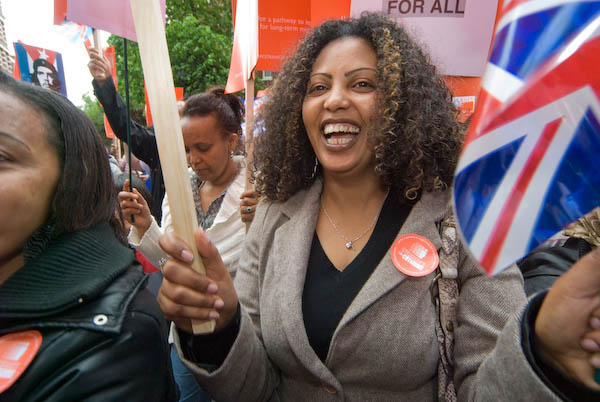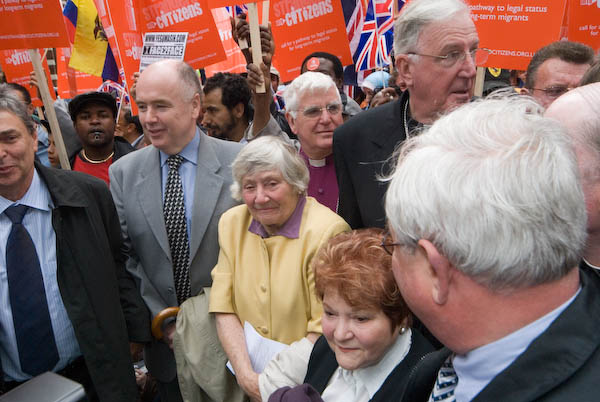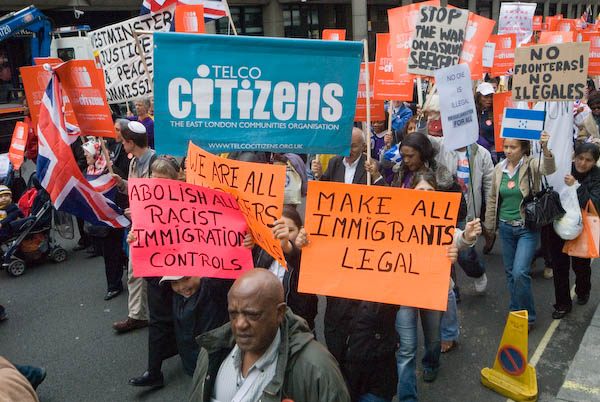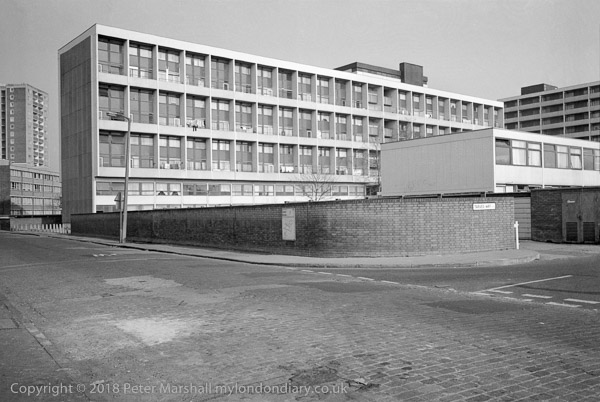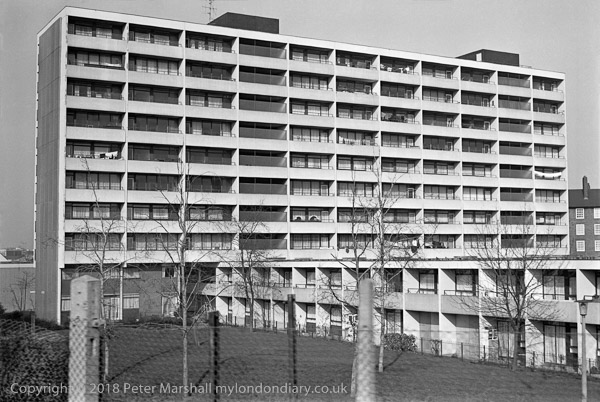Housing Act, Student rents & Open Gardens: On Saturday 18th June 2016 I went to three events all with a connection with housing. First was a protest against the 2016 Housing and Planning Act passed the previous month, after which I briefly visited students celebrating a victory at UCL before going to South London for an Open Gardens event at an estate which Lambeth Council want to demolish.
Axe the Housing Act March – Hyde Park Corner
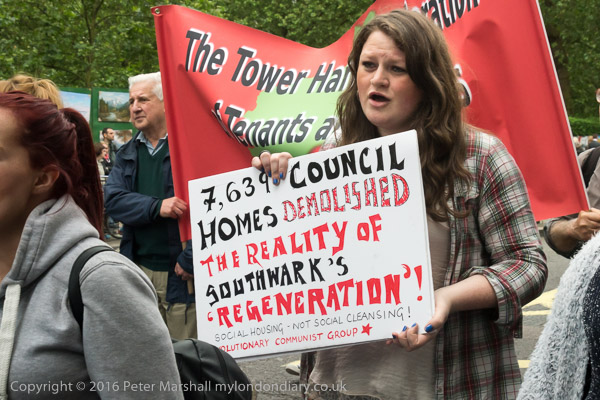
Protesters marched from Hyde Park Corner to Parliament against the Housing and Planning Act which tenant and housing groups, councils, academics, trade unions and communities say will deepen the current housing crisis, removing security from many tenants and will result in the demolition and selling off of almost all social housing.

The Act extends the ‘Right to Buy’ to housing association tenants and allows councils to sell vacant ‘higher value’ vacant council homes to fund this.

It brings in mandatory rent increases for households in social housing with a combined family income of ore than £40,000 in London and £31,000 elsewhere with their rents increasing over time to market rents. Amendments made this slightly fairer by limiting the income considered to the taxable income of two main household earners and excluding most of those receiving benefits from the calculations.

The Act removes security of tenure for most council tenants. New tenants will only get fixed term tenancies generally from 2-5 years, with some longer tenancies agreed for those with a disability or children living at home until they reach the age of 19 following pressure from the House of Lords.
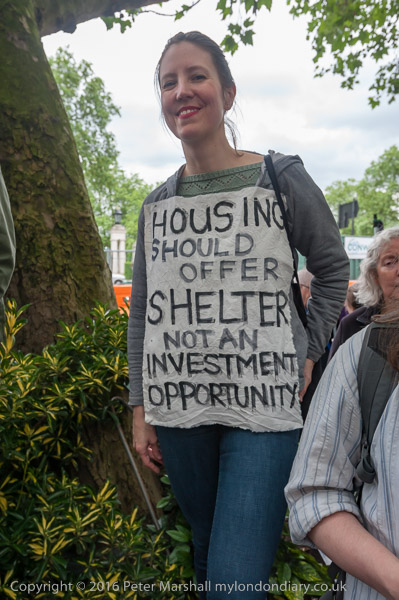
The Act reflects and emphasises the Tory view that social housing should be a very limited resource only supporting the the very poorest in society, second-class citizens, with the landlords and house builders being able to make profits from the rest of us. But housing campaigners generally see it as by far the most cost-effective way to provide for one of our basic human needs and also argue that it can provide an income for local councils to support other vital services.
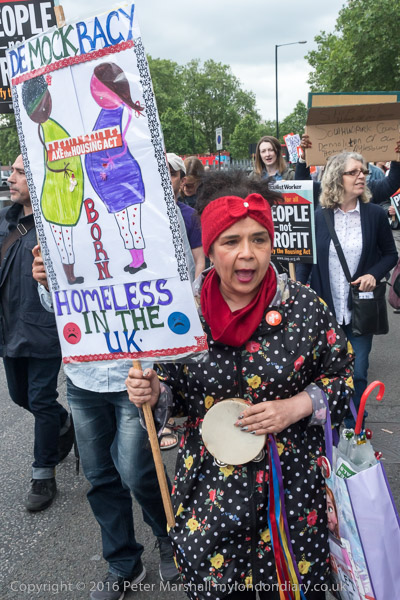
The protesters urged councils to refuse to implement the Act and call on people to stand together to boycott the pay-to-stay tax, resist evictions and block regeneration and estate demolitions.
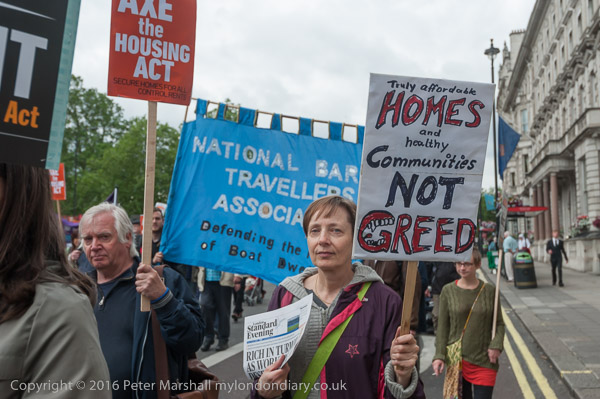
Among the speakers before the march began was Richard Livingstone, a councillor from the London Borough of Southwark, Cabinet Member for Adult Care and Financial Inclusion and formerly responsible for housing in the borough.

Southwark is a borough with an appalling record on housing and estate demolition and many at the protest were appalled at his presence calling Southwark’s demolition of the Heygate and Aylesbury a shameful example of exactly the kind of social cleansing this protest was against.
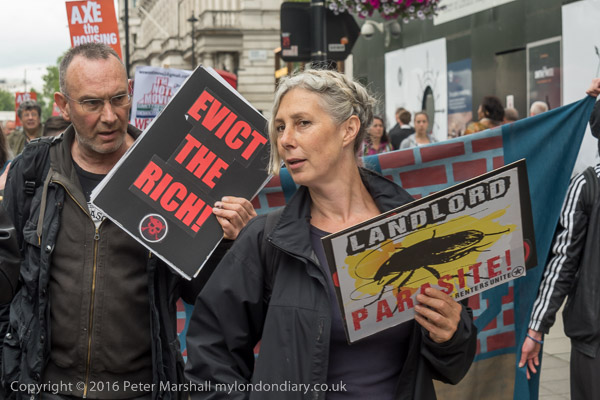
Many feel that many Labour councillors and officers are now careerists, driven by political or financial advancement rather than caring for the people in their borough. A number have earned themselves highly paid jobs with developers and other companies in the housing sector.

I left as the march moved off towards Parliament and made my way to UCL.
More at Axe the Housing Act March.
UCL Rent Strike Victory
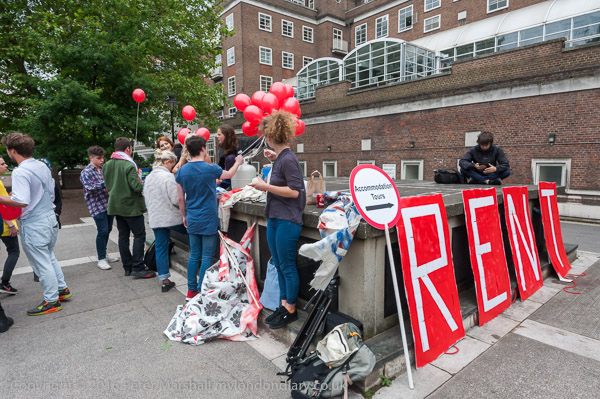
It was good for once to be able to celebrate a victory, after after the Complaints Panel at UCL decided that the residents of Campbell House West will be compensated in full for the final term last year – up to £1,368 per student.
They determined that UCL Management “Not only demonstrated a lack of empathy towards students’ circumstances and an understanding or appreciation of what would be an acceptable student experience, but was disingenuous to the students concerned.”
So the mass protest that had been planned, an Open Day Manifestation, turned into a celebration of their victory, and also to show their determination to continue their campaign to cut student rents.
I left after a brief visit, missing the lively victory march around the West End with flares and the helium-filled balloons I had watched them preparing.
Central Hill Open Gardens Estates – Upper Norwood
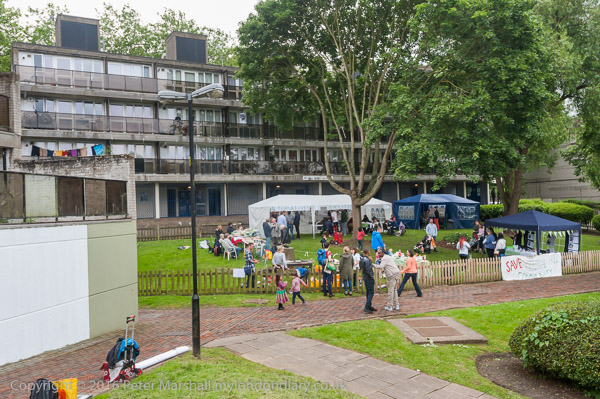
Lambeth’s Central Hill Estate is a popular and well-planned estate of considerable architectural interest in good condition under threat of demolition by Lambeth Council. Like some other estates it has been refused listing probably on political grounds. The properties, completed in 1974, were well built and are generally in good condition though suffering like most council estates from a lack of proper maintenance and in need of relatively minor refurbishment.
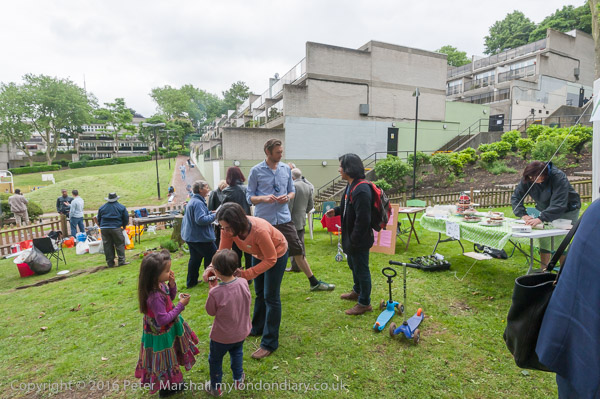
This was one of the estates under threat of demolition by Government Housing policies, council regeneration programmes and property developers which were welcoming visitors to open day events as a part of the Open Garden Estates initiative by Architects for Social Housing, ASH.
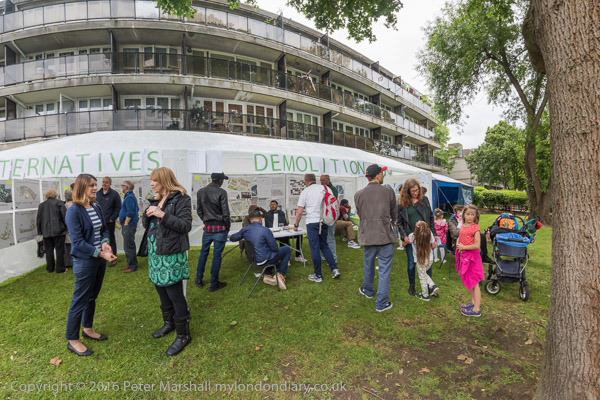
There was a display of the alternative plans for the estate by ASH showing how the council’s aims of increasing the capacity of the estate could be achieved without any demolition and at a much lower financial and environmental cost.
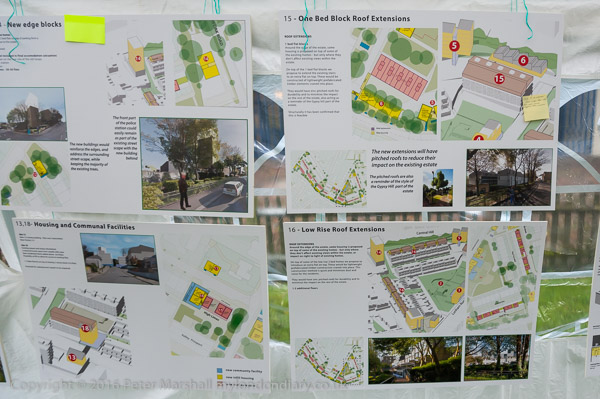
Lambeth Council had refused to make any serious consideration of these plans, almost certainly because although the cost would be much less, they would not provide the profits to the developers from the high market value sales of new properties and market rents, and the costs of the ASH scheme to the council would be greater.
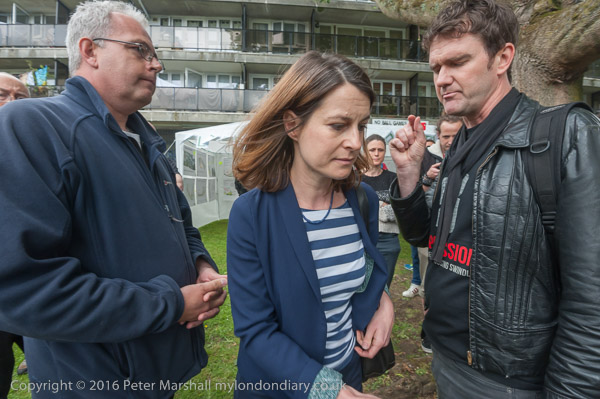
One of the visitors to the open day was Labour MP for Dulwich and West Norwood Helen Hayes, who stormed out after being questioned why she was attending when she had given her backing to Labour councillors behind the plans to demolish the estate.

Also at the open day were various food, book and other stalls, a music performance, film show (I watched a film about how Southwark Counci had mistreated the residents of Myatts Fields) and a Marxist puppet show as well as estate tours. I’d visited the estate several times in the past and had photographed parts of it in the 1990s as well as more recently in February 2016 when I wrote more about it and Lambeth’s plans to demolish.
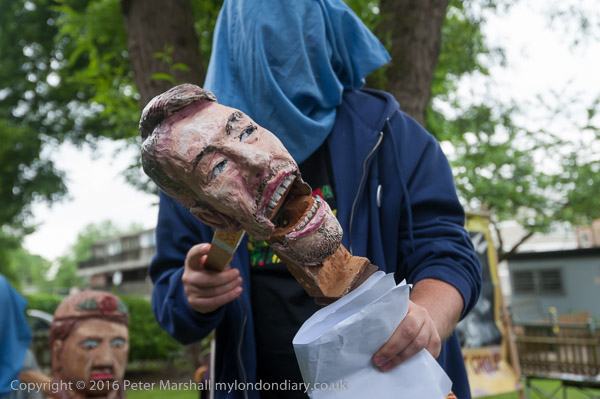
Although New Labour’s ‘Regeneration’ policy possibly had good intentions, its results have often been disastrous, and Labour really needs to rethink its whole approach to council-owned housing.
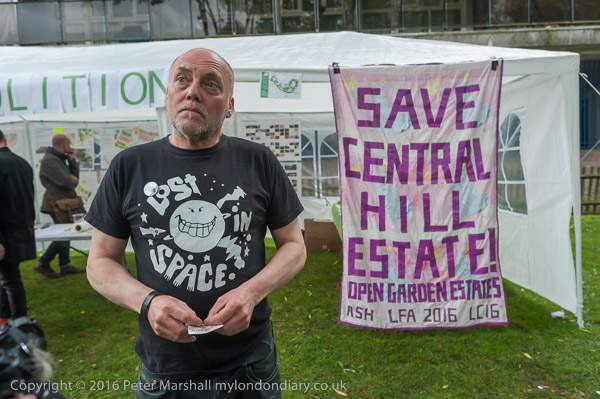
As I wrote in 2016: “‘Regeneration’ has resulted in huge transfers of public assets into private hands, in a wholesale loss of social housing, and in social cleansing, with people being forced outwards from London, unable to afford either the laughably named ‘affordable’ properties or those at market rates. It has meant the dispersal of functioning communities, in widespread and arguably fraudulent under-compensation of leaseholders, and in a great deal of sub-standard buildings, often to lower specifications of space and worse design than those they replace.“
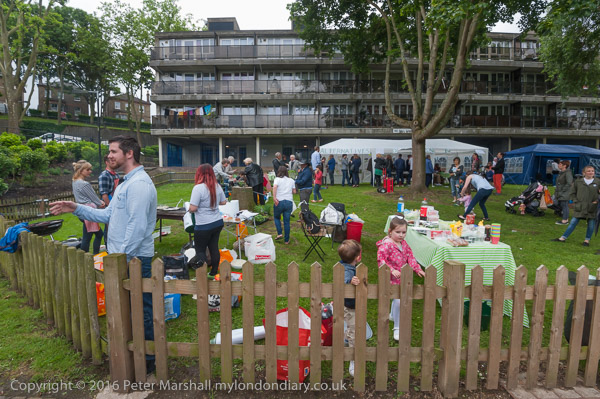
More people were arriving at the event when I left to go home and I was sorry to have to miss some of the activities planned for later in the day.
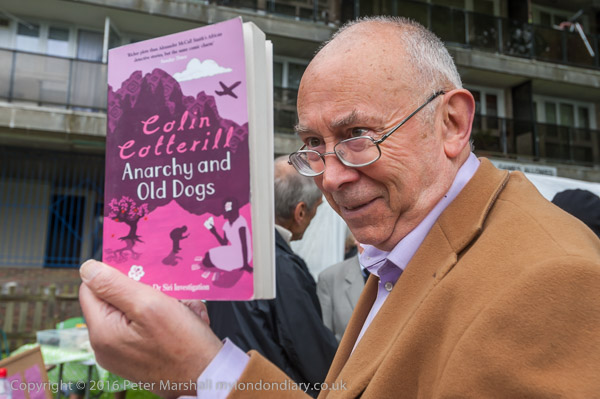
The estate is still standing and the fight to save it continues. In March 2024 Lambeth Council set up a contract with consultants to reappraise the plans for estate ‘regeneration’ at Cressingham Gardens, Central Hill and Fenwick. Perhaps it will come up with some more sensible proposals …
More at Central Hill Open Gardens Estates.
Flickr – Facebook – My London Diary – Hull Photos – Lea Valley – Paris
London’s Industrial Heritage – London Photos
All photographs on this page are copyright © Peter Marshall.
Contact me to buy prints or licence to reproduce.
